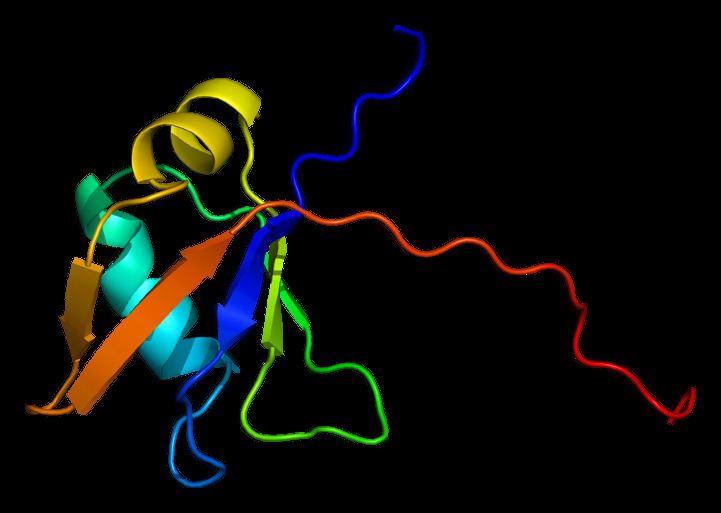Species Human Entrez 23435 | Human Mouse Ensembl ENSG00000120948 | |
 | ||
Aliases TARDBP, ALS10, TDP-43, TAR DNA binding protein External IDs MGI: 2387629 HomoloGene: 7221 GeneCards: TARDBP | ||
TAR DNA-binding protein 43 (TDP-43, transactive response DNA binding protein 43 kDa), is a protein that in humans is encoded by the TARDBP gene.
Contents
Function
TDP-43 is a transcriptional repressor that binds to chromosomally integrated TAR DNA and represses HIV-1 transcription. In addition, this protein regulates alternate splicing of the CFTR gene. In particular, TDP-43 is a splicing factor binding to the intron8/exon9 junction of the CFTR gene and to the intron2/exon3 region of the apoA-II gene. A similar pseudogene is present on chromosome 20.
TDP-43 has been shown to bind both DNA and RNA and have multiple functions in transcriptional repression, pre-mRNA splicing and translational regulation. Recent work has characterized the transcriptome-wide binding sites revealing that thousands of RNAs are bound by TDP-43 in neurons.
TDP-43 was originally identified as a transcriptional repressor that binds to chromosomally integrated trans-activation response element (TAR) DNA and represses HIV-1 transcription. It was also reported to regulate alternate splicing of the CFTR gene and the apoA-II gene.
In spinal motor neurons TDP-43 has also been shown in humans to be a low molecular weight microfilament (hNFL) mRNA-binding protein. It has also shown to be a neuronal activity response factor in the dendrites of hippocampal neurons suggesting possible roles in regulating mRNA stability, transport and local translation in neurons.
Clinical significance
A hyper-phosphorylated, ubiquitinated and cleaved form of TDP-43—known as pathologic TDP43—is the major disease protein in ubiquitin-positive, tau-, and alpha-synuclein-negative frontotemporal dementia (FTLD-TDP, previously referred to as FTLD-U) and in Amyotrophic lateral sclerosis (ALS). Elevated levels of the TDP-43 protein have also been identified in individuals diagnosed with chronic traumatic encephalopathy, a condition that often mimics ALS and that has been associated with athletes who have experienced multiple concussions and other types of head injury. Abnormalities of TDP-43 also occur in an important subset of Alzheimer's disease patients, correlating with clinical and neuropathologic features indexes.
HIV-1, the causative agent of acquired immunodeficiency syndrome (AIDS), contains an RNA genome that produces a chromosomally integrated DNA during the replicative cycle. Activation of HIV-1 gene expression by the transactivator "Tat" is dependent on an RNA regulatory element (TAR) located "downstream" (i.e. to-be transcribed at a later point in time) of the transcription initiation site.
Mutations in the TARDBP gene are associated with neurodegenerative disorders including frontotemporal lobar degeneration and amyotrophic lateral sclerosis (ALS). In particular, the TDP-43 mutants M337V and Q331K are being studied for their roles in ALS. Cytoplasmic TDP-43 pathology is the dominant histopathological feature of multisystem proteinopathy. The N-terminal domain, which contributes importantely to the aggregation of the C-terminal region, has a novel structure with two negatively charged loops.
